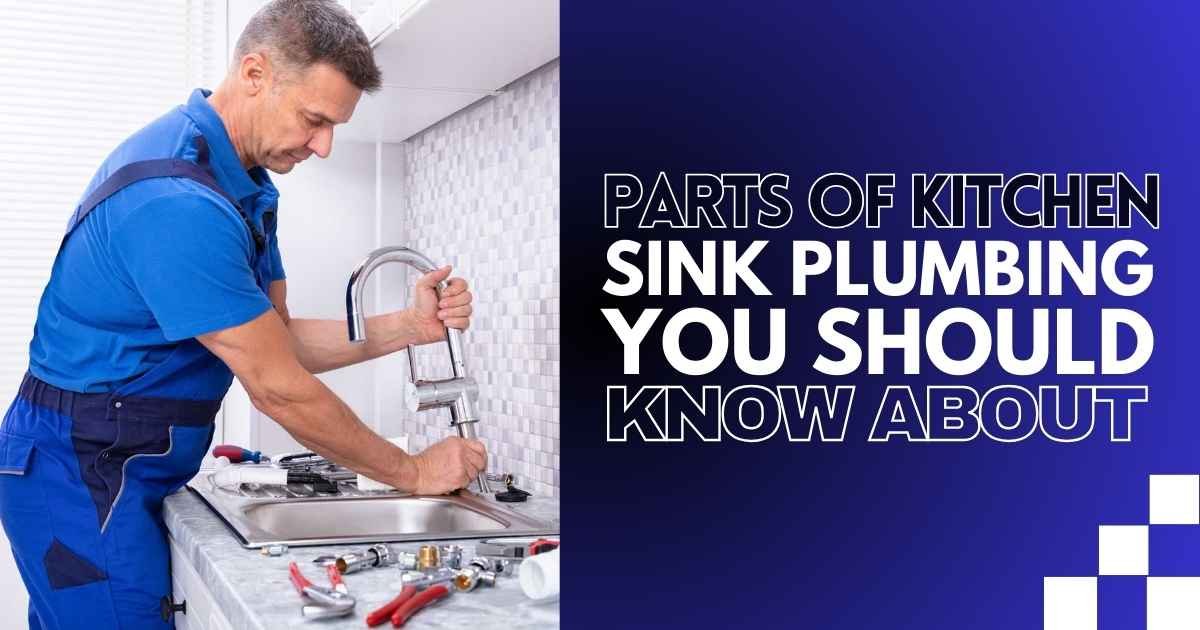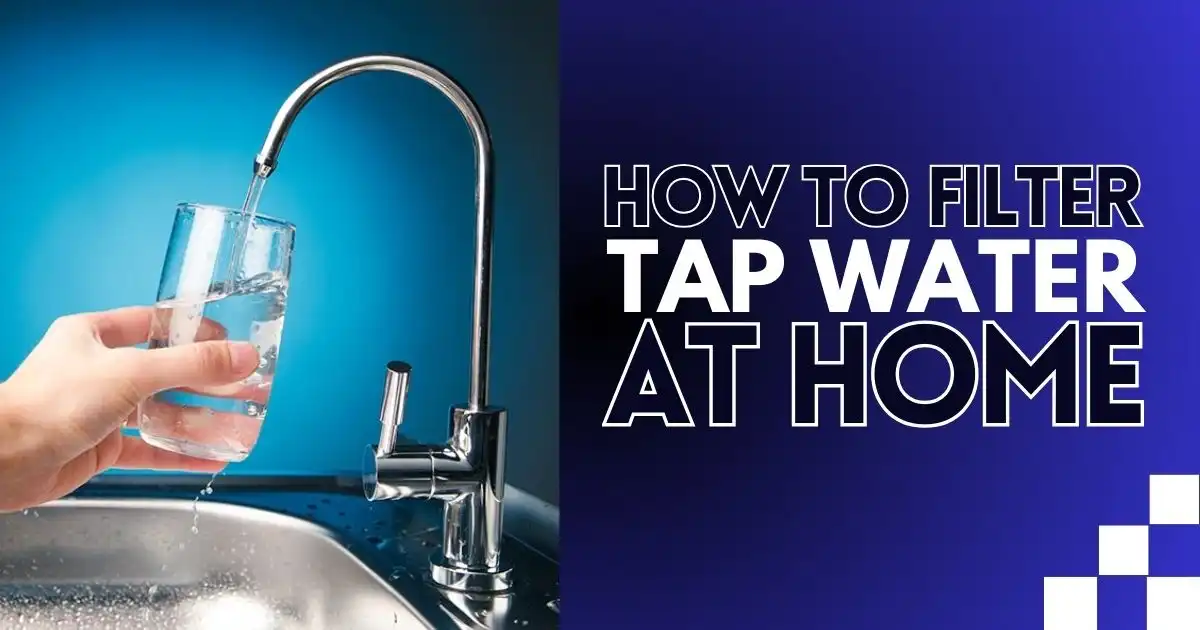You’re washing dishes when you notice water pooling under your kitchen sink. Opening the cabinet, you spot drips coming from a pipe, but you’re unsure what’s causing it. In these moments, knowing a bit about kitchen sink plumbing can be a real lifesaver.
Knowing the parts like the drain, tailpiece, and P-trap helps you identify issues quickly and may even save you a repair call. With a little knowledge about how these parts work, you can keep your kitchen running smoothly and avoid unexpected messes or expenses.
What is a Kitchen Sink in Plumbing?
A sink is a bowl-shaped fixture used for things like washing hands, cleaning dishes, and other everyday tasks. It usually has a tap (or faucet) that provides both hot and cold water, making it easy to adjust the temperature. Some sinks also have a handy spray feature that helps with faster rinsing, especially useful for washing dishes or cleaning larger items.
For example, kitchen sinks are often wider and deeper to fit pots and pans, while bathroom sinks are smaller, designed mainly for washing hands and face. Utility sinks in laundry rooms are even deeper, perfect for soaking clothes or rinsing mops.
9 Different Parts of Kitchen Sink Plumbing
Knowing the key parts of your plumbing kitchen sink helps you handle minor fixes or know when to call for help. From the faucet to the P-trap, understanding each part boosts your confidence in managing the system.
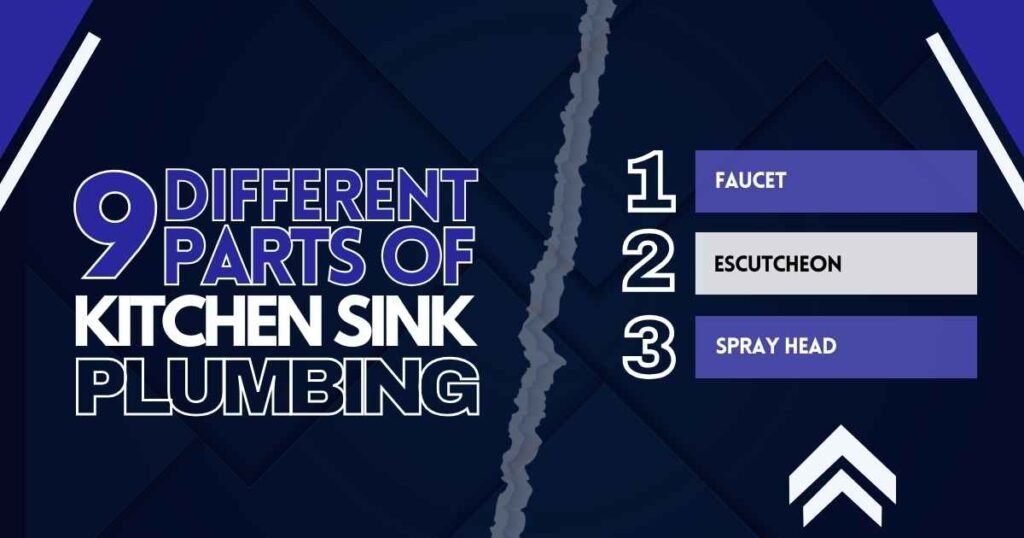
1. Faucet
The faucet is the main part of your kitchen sink where water flows out, with key parts like the aerator, spout, and controls. The aerator, a small mesh piece, breaks water into small streams, creating high pressure and reducing splashing.
It may need cleaning due to mineral buildup. The spout, which comes in various styles, is the visible part of the faucet; issues like leaks or low pressure might mean it needs repair. Fixing an aerator costs $3 to $8, while faucet repairs generally range from $150 to $600, and a full replacement can cost between $161 and $364.
2. Escutcheon
An escutcheon is a decorative metal piece that covers the plumbing holes around the faucet, giving the sink parts a clean, polished look. You’ll usually find it around the faucet base or where pipes enter the wall.
While it mainly serves an aesthetic purpose, it also protects exposed plumbing from dirt and moisture, helping keep your sink area tidy and well-maintained.
3. Spray Head
The kitchen sink spray head is a handy, detachable part that makes tasks like washing dishes and cleaning the sink much easier. Connected to the same water lines as the main faucet by a flexible hose, the spray head lets you switch between using the faucet and the spray head with ease.
This setup provides precise control over water flow, perfect for washing away stubborn food bits from plates. While very convenient, spray heads can develop leaks or other issues over time, especially with frequent use.
If you notice low water pressure or leaks, it might be time to repair or replace it. Replacements usually cost around $53 but can range between $7 and $294 depending on the brand and features.
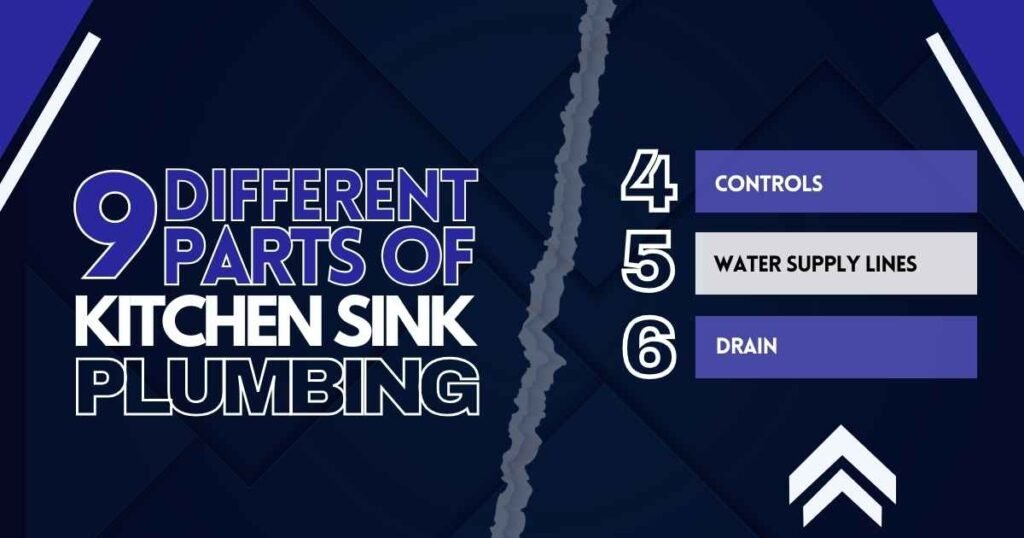
4. Controls
The faucet controls manage water flow and temperature. You can choose between a single-handle or two-handle setup. A single handle is simple to use and can be adjusted with one hand, making it ideal for quick access. The two-handle setup, with separate handles for hot and cold water, offers a classic look but needs careful installation.
Kitchen faucet handles are built to last, typically around 10 to 20 years with regular use and maintenance. Signs of wear, like leaks or stiffness, are common over time, so occasional maintenance helps extend their life.
5. Water Supply Lines
Water supply lines bring hot and cold water from your home’s plumbing to the faucet and spray head. Usually made from durable materials like copper or galvanized steel, these lines are built to handle everyday use in the kitchen.
Over time, though, they can wear out, leading to leaks or corrosion. With regular care, supply lines can last up to 100 years, so they don’t often need replacing.
6. Drain
The drain in your kitchen sink helps water flow out of the sink basin and into the plumbing system. Located at the bottom of the sink, it directs water through the P-trap and into the pipes hidden in your wall.
Unlike bathroom drains, which often have a stopper to hold water, kitchen sinks usually have a stopper that catches food waste instead. These stoppers can be easily removed so you can access the garbage disposal.
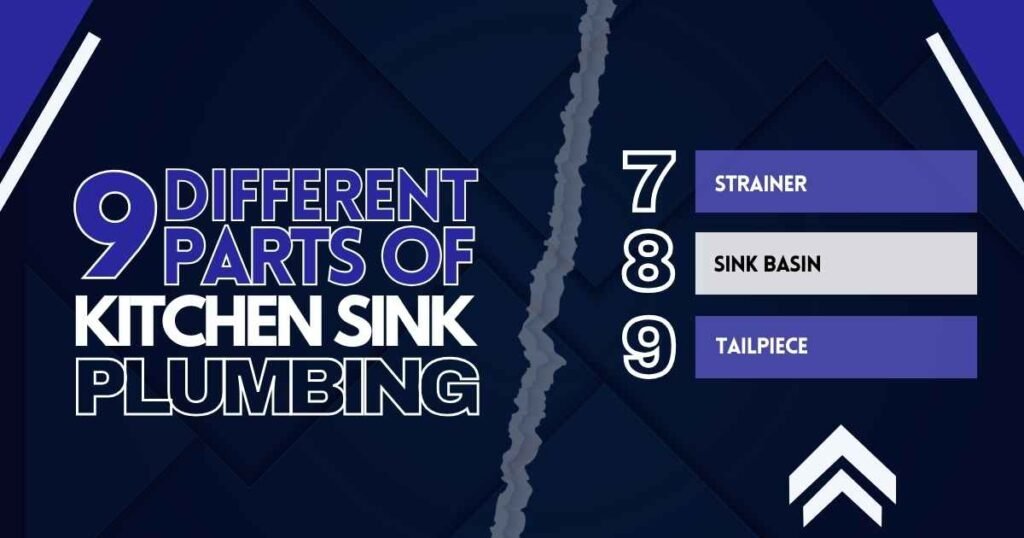
7. Strainer
A sink strainer catches debris to keep your pipes clog-free. It has three main parts: the strainer body, the coupling, and the flange. Together, they filter out food scraps, grease, and soap residue that could clog your drain.
The strainer body collects food bits, while the coupling and flange hold the strainer securely in place. Although strainers don’t need frequent replacement, switching them every few years—especially with heavy use—can help keep everything running smoothly. A new strainer is affordable, often costing as little as $10.
8. Sink Basin
When we talk about the “kitchen sink,” we usually mean the basin—the main part where you wash dishes, rinse fruits and veggies, and more. The basin holds water from the faucet, and at its bottom is the drain to carry away used water. Sink basins are built to last, but their durability depends on the material.
Porcelain and ceramic are prone to chips, while stainless steel is tougher but may show dents and scratches over time. With good care, your sink can last decades, but eventually, it might need replacing if damaged.
If a new sink is needed, removal costs range from $20 to $300, while installation costs range between $216 and $648, depending on factors like labor, location, and sink type. While sink installation doesn’t require advanced plumbing skills, hiring a professional can help prevent mistakes.
9. Tailpiece
The tailpiece is the pipe that connects the sink’s drain to the rest of your plumbing. It directs water from the sink down into the plumbing system, preventing any pooling under the sink that could lead to water damage.
Typically made of metal or durable plastic, the tailpiece is a straight pipe extending from the drain, just below the strainer.
How to Maintain the Kitchen Sink Plumbing Parts?
Keeping your kitchen sink and its plumbing in good condition helps prevent clogs, leaks, and costly repairs. Replacing a kitchen sink can cost between $216 and $648, and even up to $1,500, so a bit of regular maintenance can save you a lot. Here are some simple tips to keep your kitchen plumbing working smoothly:
- Clean the Drain Regularly: To prevent buildup, clean your sink’s drain with a mix of baking soda and vinegar. Pour half a cup of baking soda followed by half a cup of vinegar down the drain, let it sit for 15 minutes, then flush with hot water. This prevents clogs and removes odors.
- Avoid Grease in the Drain: Never pour grease, fats, or oils down the sink, as they can harden and cause clogs. Instead, let them cool and throw them in the trash. For small amounts, wipe out pans with a paper towel before washing.
- Check for Leaks: Inspect under your sink for water stains, mold, or damp spots. If you find a leak, tighten fittings or replace old washers. Fixing small leaks early prevents bigger issues like water damage.
- Flush the Pipes: Every few months, run hot water for several minutes to clear out food particles and grease from your pipes. This simple step can help keep things flowing smoothly.
- Use Your Garbage Disposal Wisely: If you have a garbage disposal, avoid putting in fibrous foods (like celery), starchy foods (like pasta), or hard items like bones. Running cold water while using the disposal can also help it work better.
Know Your Sink, Save Your Wallet!
Listen, dealing with plumbing may not be the most exciting part of home upkeep, but think about it—how many times has a little leak or clog turned into a bigger problem? Knowing the parts of your kitchen sink plumbing might seem small, but it’s a skill that could save you time, money, and a lot of stress down the line.
Now, let me ask you, have you ever taken a moment to learn something small that made a big difference later on? Wouldn’t it be worth knowing a bit more now to keep your kitchen running smoothly in the future?
Don’t let leaks or clogs slow down your kitchen! If your sink isn’t working as it should, Vegas Plumbing Pros is here to help. Our team can handle everything from minor repairs to complete plumbing fixes, so you can keep your kitchen running smoothly. Contact Vegas Plumbing Pros today for fast, reliable service that gets it done right!
FAQs
What parts do I need to plumb a sink?
To plumb a sink, you’ll need a drain strainer, tailpiece, P-trap, and connecting pipes. You may also need a faucet, supply lines for hot and cold water, shut-off valves, and washers to ensure a tight fit.
What are the pipes under the kitchen sink called?
The pipes under the sink include the tailpiece (straight pipe from the sink), the P-trap (curved pipe to trap debris and prevent odors), and the drain pipe, which connects to the home’s main plumbing.
How kitchen sink plumbing works?
Kitchen sink plumbing is designed to bring water to and from your sink efficiently. It starts with two main water supply lines—one for hot water and one for cold—connected to the faucet. When you turn the faucet handle, it controls the flow and temperature of the water that comes out. Once the water is used, it flows down the drain, which includes a special U-shaped pipe called a trap.
What are the parts of a kitchen sink?
A kitchen sink has several main parts that work together to make washing and cleaning easier. The basin is the main bowl where dishes are washed, and water flows in. Water comes out from the faucet, which is controlled by handles—usually one for hot and one for cold.
